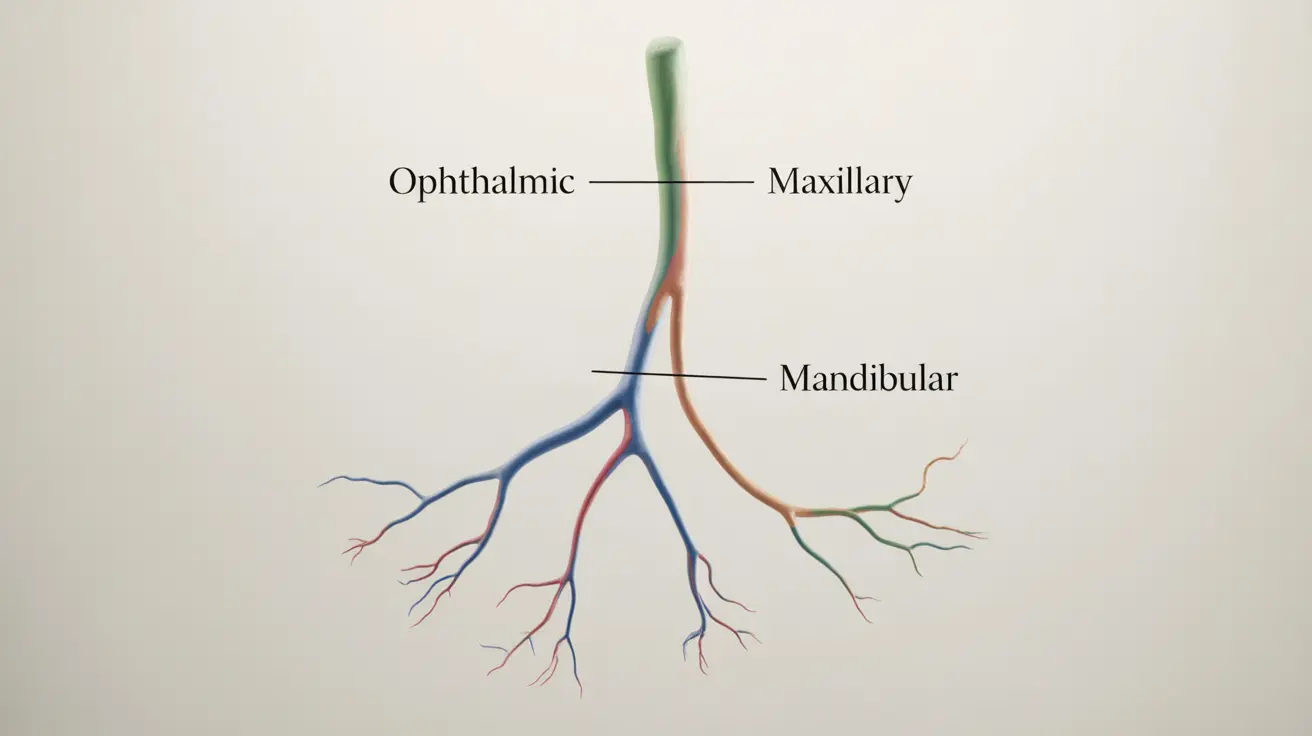The trigeminal nerve, also known as the fifth cranial nerve, plays a crucial role in facial sensation and motor function. This essential nerve is responsible for transmitting sensory information from your face to your brain and controlling the muscles involved in chewing. Understanding trigeminal nerve function is vital for recognizing potential problems and maintaining facial health.
Anatomy and Basic Function of the Trigeminal Nerve
The trigeminal nerve is the largest of the cranial nerves and consists of both sensory and motor components. It emerges directly from the brainstem and divides into three major branches, each serving different areas of the face and performing specific functions.
The Three Main Branches
The trigeminal nerve divides into three primary branches:
- Ophthalmic nerve (V1): Controls sensation in the forehead, upper eyelid, and nose
- Maxillary nerve (V2): Manages sensation in the cheeks, upper lip, and upper teeth
- Mandibular nerve (V3): Handles sensation in the lower jaw, lower teeth, and provides motor function for chewing muscles
Sensory Functions
The trigeminal nerve's sensory functions are extensive and vital for daily activities. It processes multiple types of sensations, including:
- Touch and pressure
- Temperature changes
- Pain signals
- Position sense for jaw movement
- Proprioception during chewing
Motor Functions and Muscle Control
The motor portion of the trigeminal nerve primarily controls the muscles of mastication (chewing). These muscles include:
- Temporalis muscle
- Masseter muscle
- Medial and lateral pterygoid muscles
- Muscles controlling tensor tympani
Protective Reflexes and Responses
The trigeminal nerve plays a crucial role in protective reflexes that help safeguard our face and especially our eyes. It works in conjunction with other cranial nerves to coordinate these vital protective responses:
- Corneal reflex (blinking)
- Sneeze reflex
- Jaw jerk reflex
- Bite reflex
Frequently Asked Questions
What are the main functions of the trigeminal nerve in facial sensation and movement?
The trigeminal nerve primarily controls facial sensation, including touch, temperature, and pain perception across the face. It also manages motor functions for chewing muscles and coordinates various protective reflexes.
How can damage or dysfunction of the trigeminal nerve affect chewing and facial sensation?
Damage to the trigeminal nerve can result in reduced or altered facial sensation, difficulty chewing, jaw weakness, and potential pain syndromes. Patients may experience numbness, tingling, or burning sensations in affected areas.
What are the common symptoms and triggers of trigeminal neuralgia related to trigeminal nerve function?
Common symptoms include intense, shock-like facial pain triggered by everyday activities such as eating, talking, or light touch. Triggers can include cold air, washing the face, shaving, or applying makeup.
How is the trigeminal nerve involved in reflexes like blinking and protecting the eye?
The trigeminal nerve works with other cranial nerves to coordinate the corneal reflex (blinking) when something approaches or touches the eye. This protective mechanism helps prevent injury and keeps the eyes moisturized.
What are the differences between the three branches of the trigeminal nerve and their specific roles?
The ophthalmic branch (V1) handles sensation in the forehead and eyes, the maxillary branch (V2) manages middle facial sensation, and the mandibular branch (V3) controls lower facial sensation and chewing muscles. Each branch serves distinct areas and functions while working together as part of the complete trigeminal nerve system.




